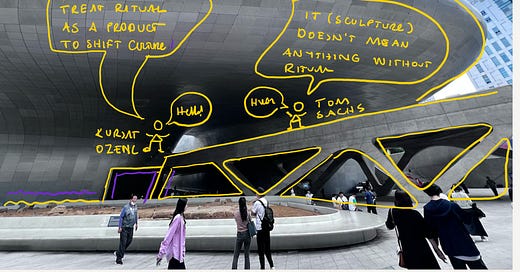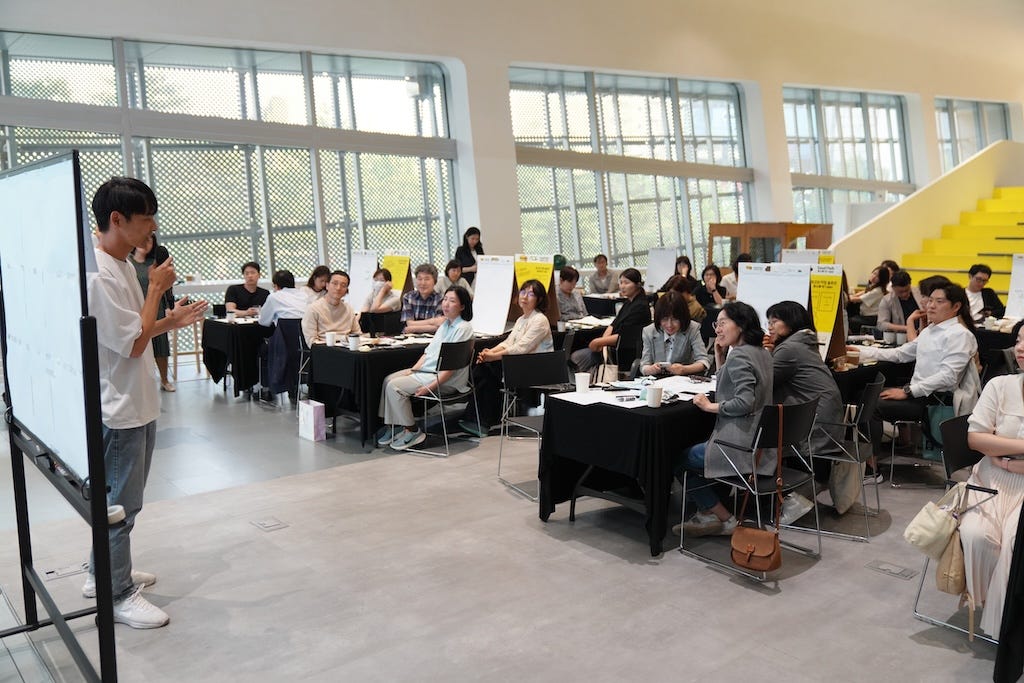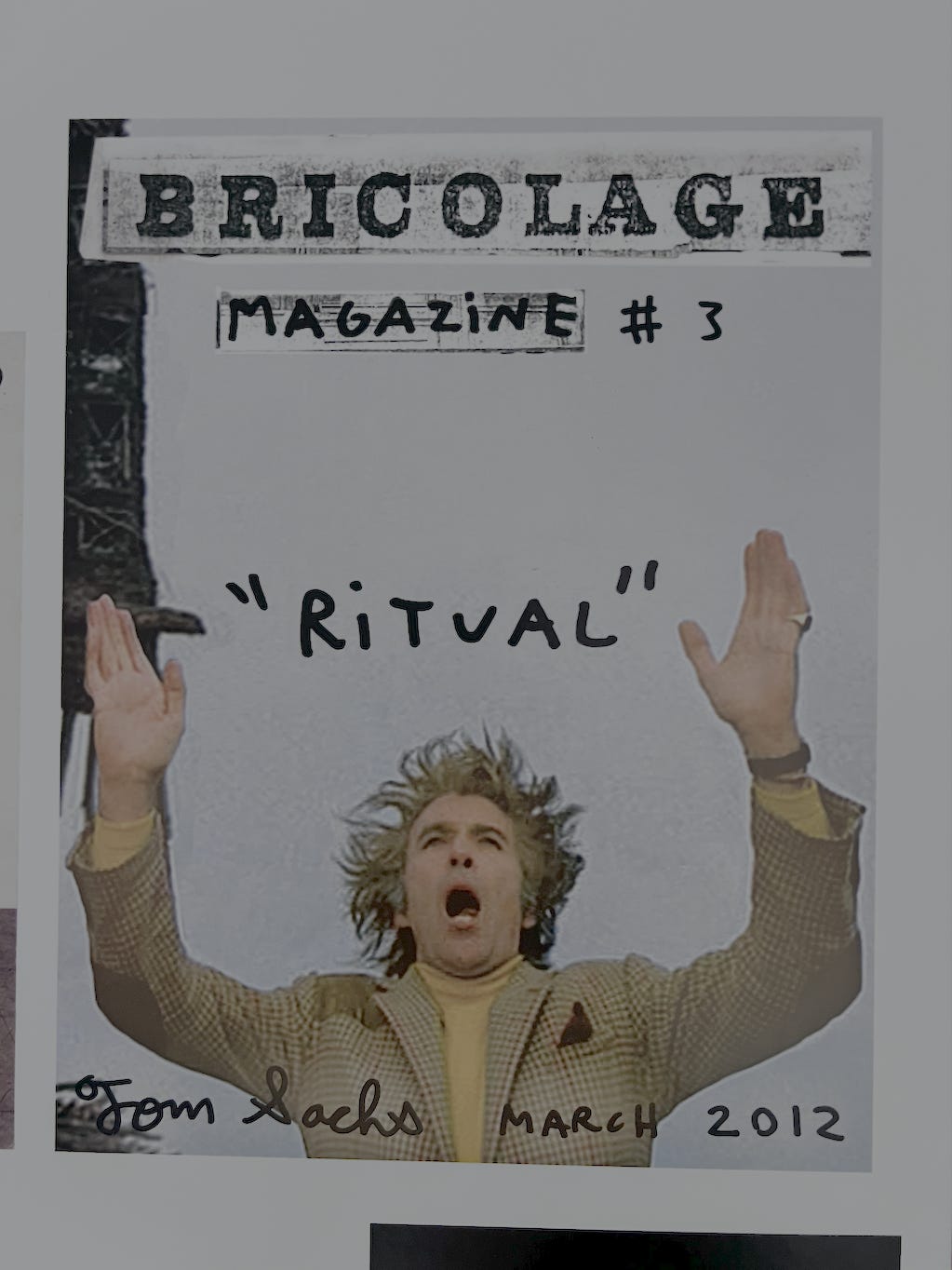Ritual Encounters from Seoul
Ritual as a dynamic scaffolding into performative art and culture
This past May, I visited Seoul, gave a talk on team rituals, and led a design thinking workshop for city officials. It was delightful to present to and work with a curious audience in the futuristic Dongdaemun Design Plaza, a venue designed by Zaha Hadid. The people were warm and welcoming; our hosts at Seoul Design Foundation took excellent care of us. On this trip, I realized care is a value that's deeply rooted in Korean culture. This care is not just about hospitality, but it reflects the Korean people's deep respect for one another. It shows up in natural ways, such as when my friend asked a stranger on the street for directions, and she responded generously.
The design challenge was to manifest the city's motto, "Walking with the vulnerable." I chose commuting as a design challenge, as it presents a tangible way to explore the obstacles faced by vulnerable populations. It's also something that everyone can relate to and discuss within a short design cycle.
I was impressed with the audience's engagement despite the language barrier. We had real-time interpreters translating instructions, and it worked out smoothly. I also got some facilitation help from my Korean friend. The audience's ideas were delightful and inspiring. They developed solutions such as an autonomous bus for short-distance commuters, a hidden seat accessible only to those in need (e.g., pregnant women), and a therapeutic bus ride experience featuring music and panoramic views. Their creativity and empathy were deeply moving.
After my talk, I had the opportunity to visit an exhibit by Tom Sachs at the Design Plaza, titled "Space Program: Infinity." The exhibit exceeded my expectations, particularly with its prolific output and ritual framing. Tom Sachs employs bricolage, using ready-made objects to create sculptures that become performative art. In the Space Program, he reimagines how astronauts and the ground crew might have experienced the moon landing and explored the other celestial worlds. He created intricate pieces, ranging from those in the control room to objects that astronauts may have used. One sculpture, for example, is a mobile recording unit adapted from a jogger stroller. The exhibit was not just a display of art, but a journey into the imagination of a designer who reinterprets history through his unique lens.
What inspired me most was Sachs's use of ritual to frame his work. Upon entering the exhibit, we underwent a purification ritual that involved passing through a tunnel with blasting air. Throughout, there were ritualistic touches—from imagined control room protocols to the astronauts' daily routines inside the spaceship. Sachs is bold in his framing: "There are three reasons people do anything: spirituality, sensuality, and hardware. In the space program, spirituality poses the same question that science and religion have always asked: Are we alone? Where do we come from? Sensuality is going where no one has gone before, the thrill of exploration. And hardware is rockets, satellites, and cool stuff."

His view on ritual becomes even clearer in his Tea Ceremony piece, where he reimagines the Japanese Tea Ceremony through a bricolage approach. As he puts it: "Our priority is sculpture, but it doesn't mean anything without the ritual and the spirituality and the reasons behind it. You've gotta have all three."
Having seen his other works and watched his interviews, I felt like I had reconnected with a long-lost designer friend. This experience sparked a fresh perspective that I’m eager to explore further this summer. I look forward to sharing more discoveries with you soon.
Speaking of unexpected connections, before my talk, I had the pleasure of running into a few friends from Istanbul and Pittsburgh in the most serendipitous way. It was a magical moment—a beautiful reminder of the joy that chance encounters can bring.
Things I am watching, listening to, and reading
For Wes Anderson fans, I recently watched Every Wes Anderson Movie, explained by Wes Anderson, where he recounts the backstory of his 12 movies. Having finished watching the interview, I realized he hadn’t even scratched the surface of his creative process and visual language, and I had more questions to ask him.
What Our Analysis of 900 firms tells us about their values is a fascinating research study on company values. Researchers at MIT analyzed Glassdoor reviews, examining factors such as toxicity, work-life balance, and the culture of innovation. One key takeaway from their research is that culture is about trade-offs, and there is no single clear culture champion that scores high on all metrics.
For Hard Fork podcast fans, the hosts have an excellent piece as part of The New York Times Magazine's special AI issue. The issue is rich, even featuring a visual essay by Christopher Niemann. Check it out.
And that’s a wrap for this issue. Until next time, take good care of yourself and your loved ones.






